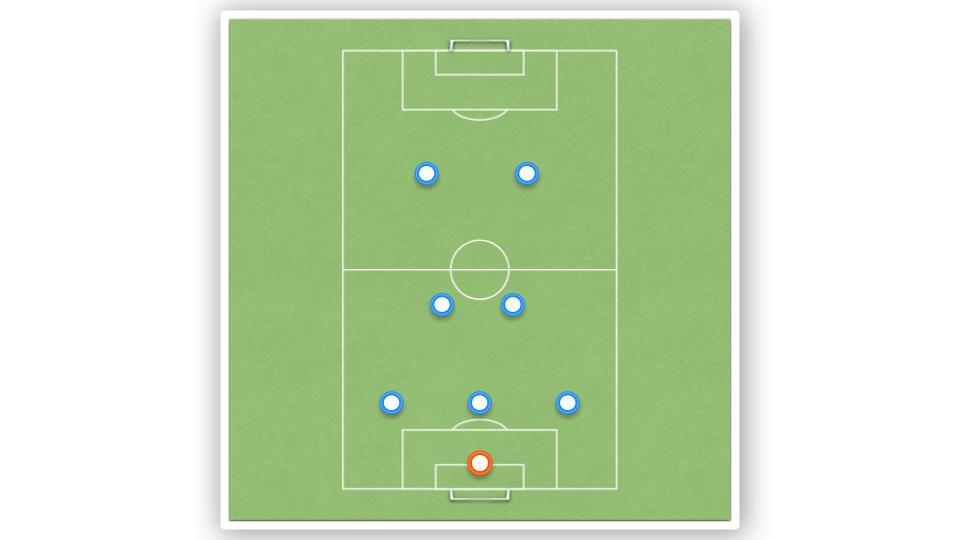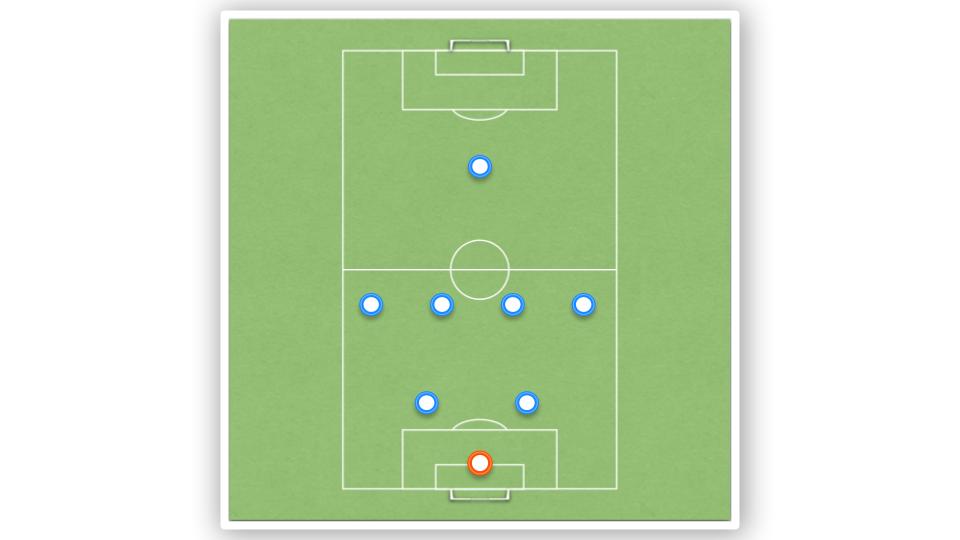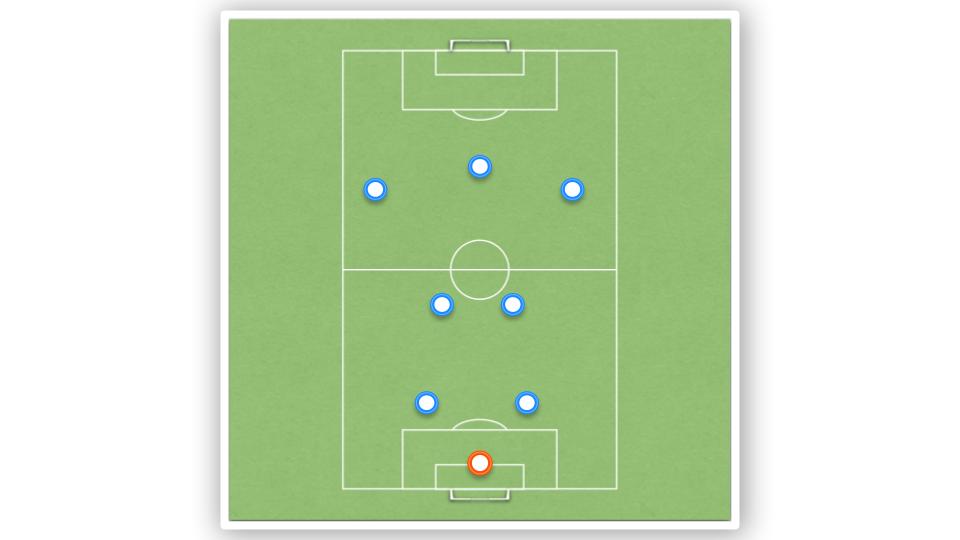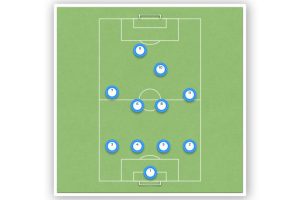Best 8 V 8 Soccer Formations
Looking to dominate the field with your 8 v 8 soccer team? Look no further!
We’ve got the best formations to help you score those winning goals. Whether you’re a defensive powerhouse or an attacking force, we’ve got the perfect formations for you.
With our expert coaching techniques, you’ll be able to outplay any opponent. So grab your cleats, tighten those laces, and get ready to conquer the game with these unbeatable 8 v 8 soccer formations.
Key Takeaways
- The 2-3-2 formation provides a solid defensive foundation and quick transitions from defense to attack, but it has potential gaps in midfield and challenges in maintaining possession and control.
- The 4-2 formation offers a solid structure and tactical advantages, but it also has potential gaps in midfield and challenges in maintaining possession and control.
- The 8-2 formation encourages teamwork and adaptability, but it requires constant communication and disciplined positioning.
- The 3-3-1 formation provides increased goal-scoring opportunities and improved midfield control, but it is vulnerable on the flanks and requires disciplined positioning and constant communication.
2-3-2 Formation

The -2 formation, also known as the 3-2-2 formation, can offer several benefits for your team.
By having two central defenders, you can provide a solid defensive foundation and protect against counterattacks.
However, be aware that this formation may leave gaps in the midfield, making it crucial for your central midfielders to have excellent positioning and work rate.
Benefits of the Formation
You can reap the benefits of playing the (-2 Formation) by utilizing a strong defensive line. This formation, also known as the 4-2-3-1 formation, can provide your team with a solid structure and tactical advantages. By having two defensive midfielders in front of the back four, you can effectively protect your goal and limit the opposition’s scoring opportunities. Additionally, the (-2 Formation) allows for quick transitions from defense to attack, as the two defensive midfielders can provide a solid base for launching counter-attacks.
To further illustrate the benefits of the (-2 Formation), here is a table showcasing its key advantages:
| Benefits of (-2 Formation) |
|---|
| Strong defensive line |
| Effective ball distribution |
| Versatile midfield |
| Quick transition |
Weaknesses of the Formation
Don’t overlook the vulnerabilities that can arise from playing the 4-2 Formation, such as potential gaps in midfield and susceptibility to counter-attacks.
While this formation can provide a solid defensive structure with four defenders, it also limits the number of midfielders available to support both the defense and the attack. With only two midfielders, there’s a risk of leaving spaces in the middle of the field, making it easier for the opposing team to exploit.
Additionally, the lack of midfielders can make it challenging to maintain possession and control the game. Furthermore, the 4-2 Formation is more susceptible to counter-attacks because of the reduced number of midfielders available to track back and defend.
It’s important to consider these weaknesses when deciding on the most suitable formation for your team.
How the Formation is Good for Player Development
Playing the 8-2 Formation can enhance player development by encouraging increased communication and teamwork among teammates. Here’s why it’s beneficial for youth soccer:
- Increased Communication: With only two defenders, players are forced to communicate effectively to cover the entire defensive line. This helps improve communication skills on and off the field.
- Teamwork: The 8-2 Formation requires players to work together closely, relying on each other’s strengths to defend and attack. This fosters a strong sense of teamwork and encourages players to support one another.
- Positional Awareness: In this formation, players have to be aware of their positions at all times, as any gaps in the defense can lead to scoring opportunities for the opposing team. This enhances players’ positional awareness and helps them understand their roles within the team.
- Adaptability: The 8-2 Formation allows players to adapt to different situations and styles of play. It teaches them to be versatile, as they may have to transition between defensive and offensive roles quickly.
Overall, the 8-2 Formation is one of the best formations for player development in youth soccer, promoting communication, teamwork, positional awareness, and adaptability.
3-3-1 Formation

The -1 Formation is an attacking formation that focuses on a lone striker supported by a midfield diamond. This formation offers several benefits such as increased goal-scoring opportunities and improved midfield control.
However, it also has its weaknesses, such as vulnerability on the flanks and potential difficulties in defending against counterattacks.
Let’s discuss the points in more detail.
Benefits of the Formation
You can’t underestimate the advantages of switching up your formation – it can really improve your team’s performance. As a coach, it’s important to experiment with different soccer formations to find the one that best suits your team’s style of play.
One area of the formation that can greatly impact the game is the midfield. Here are four benefits of switching up your midfield formation:
- Increased creativity: By adjusting your midfield setup, you can encourage your players to be more creative in their passing and movement, leading to more scoring opportunities.
- Improved defensive stability: A well-structured midfield can provide better defensive cover, making it harder for the opposition to break through and create scoring chances.
- Enhanced possession play: A balanced midfield formation can help your team maintain possession of the ball for longer periods, controlling the tempo of the game.
- Tactical flexibility: Changing your midfield formation allows for greater tactical flexibility, enabling your team to adapt to different opponents and game situations.
Weaknesses of the Formation
There is one major weakness to consider when using the V formation in soccer. While this formation offers several advantages, such as creating width and providing opportunities for quick counterattacks, it also has its drawbacks.
One of the main weaknesses of the V formation is its vulnerability in the central midfield area. Due to the triangular shape of the formation, there’s a lack of numerical superiority in midfield, making it easier for the opposing team to dominate the center of the pitch. This can lead to difficulties in retaining possession and controlling the game.
Additionally, the V formation requires disciplined positioning and constant communication among players to maintain its effectiveness. If these aspects aren’t properly executed, the formation can easily break down, leaving the team exposed to counterattacks.
How the Formation is Good for Player Development
One major advantage of the V formation is that it allows for increased player development and growth.
Here’s why:
- Position-specific training: With the V formation, each player is assigned a specific position, such as a forward or defender. This allows young players to focus on mastering their assigned role, improving their skills and understanding of the game.
- Increased playing time: In the V formation, there are fewer players on the field, which means more playing time for each individual. This gives young players the opportunity to gain valuable experience and develop their game intelligence.
- Communication and teamwork: The V formation promotes effective communication and teamwork among players. As they work together to maintain the formation, young players learn to communicate, coordinate their movements, and develop a strong understanding of their teammates’ strengths and weaknesses.
- Versatility and adaptability: The V formation allows young players to experience different positions and roles on the field. This versatility helps them develop a well-rounded skill set and adapt to different game situations.
Overall, the V formation provides a conducive environment for player development, allowing young players to grow and thrive in their soccer journey.
3-2-2 Formation

The -2 Formation is a popular choice for 8 v 8 soccer because it provides a strong defensive foundation. With two defenders in the back, you can effectively protect your goal and minimize the opposition’s scoring opportunities.
However, this formation can leave your team vulnerable in the midfield, so it’s important to have skilled and versatile midfielders who can cover both offensive and defensive responsibilities.
Benefits of the Formation
You should consider the benefits of using the -2 formation in order to maximize your team’s offensive potential. Here are four reasons why this formation could work for you:
- Strong central midfield: With two central midfielders, you can dominate the midfield and control the game. This allows for quick transitions and effective ball distribution.
- Exploiting wide players: The -2 formation provides ample space for wide players to operate. They can stretch the defense, create chances, and deliver dangerous crosses into the box.
- Numerical advantage: By having two forwards up top, you can overload the opponent’s defense and create numerical superiority in the attacking third. This can lead to more scoring opportunities.
- Flexibility: The -2 formation allows for flexibility in tactics and player positioning. You can easily switch between a more conservative approach or an all-out attacking style, depending on the game situation.
Overall, the -2 formation offers a balanced approach to maximize your team’s offensive potential by utilizing a strong central midfielder, exploiting wide players, and providing flexibility in tactics.
Give it a try and see the results for yourself!
Weaknesses of the Formation
Are you aware of the defensive vulnerabilities that come with playing the -2 formation? When setting up your team with only two defenders, it leaves a gap on the flanks that can be exploited by the opposition’s wingers. Without the support of fullbacks, these wingers can easily penetrate your defense and create scoring opportunities.
Additionally, with fewer defenders, it puts more pressure on your midfielders to track back and help in defense. This can lead to fatigue and a breakdown in defensive organization.
The lack of numbers in defense also limits your ability to cover the entire width of the field, making it easier for the opposition to spread the play and exploit the space.
Therefore, it’s important to consider these defensive weaknesses when deciding to play the -2 formation.
How the Formation is Good for Player Development
If you want your players to develop their individual skills and decision-making abilities, playing the 8 v 8 soccer formation can be beneficial. Here’s why:
- Increased touches: With fewer players on the field, each player gets more opportunities to touch the ball and work on their skills.
- More involvement: In the 8 v 8 formation, players are constantly involved in the game, which helps them develop their game intelligence and decision-making abilities.
- Versatility: This formation allows players to experience different positions and roles, enabling them to develop a well-rounded skill set.
- Increased responsibility: With fewer teammates, players have to take on more responsibility, leading to improved leadership, confidence, and accountability.
2-4-1 Formation

The -1 Formation is a versatile and attacking formation that can provide several benefits for your team. With one forward leading the line, your team can maintain a strong defensive shape while still having options to counter-attack quickly.
However, a potential weakness of this formation is the lack of support for the lone striker, requiring them to be highly skilled and efficient in front of goal.
Despite this, the -1 Formation can be a great choice for player development, as it encourages players to be creative, take risks, and develop their individual skills.
Benefits of the Formation
You’ll love the countless benefits of playing with this 8 v 8 soccer formation. Here are four key reasons why this formation is a game-changer:
- Increased scoring opportunities: With fewer players on the field, there’s more space to attack and create chances. This formation allows for a more dynamic and aggressive style of play.
- Enhanced team chemistry: The smaller team size promotes better communication and coordination among players. This leads to improved teamwork and a stronger bond on the field.
- Individual player development: Each player gets more touches on the ball and has the opportunity to showcase their skills. This formation allows for more player involvement and growth.
- Tactical versatility: The 8 v 8 formation offers flexibility in strategic approaches. Coaches can adapt their tactics based on the strengths and weaknesses of the opposing team, maximizing their chances of success.
Weaknesses of the Formation
During the game, be cautious of the potential weaknesses of the formation, such as the lack of defensive coverage. In an 8 v 8 soccer match, the defensive formation can leave your team vulnerable if not properly managed.
With fewer players on the field, it becomes crucial to maintain a strong defensive line and provide adequate coverage. However, the 8 v 8 formation often lacks the necessary numbers to effectively defend against quick counterattacks or skilled opponents. Additionally, the limited presence in defense can lead to gaps and spaces that the opposition can exploit.
To mitigate these weaknesses, it’s essential to communicate and coordinate with your teammates, ensuring quick transitions and covering for each other. Maintaining a solid defensive structure becomes even more critical in this formation, as any breakdown can quickly result in conceding goals.
How the Formation is Good for Player Development
Sometimes, playing in an 8 v 8 formation can be beneficial for player development because it allows for more touches on the ball and encourages players to be versatile in different positions. Here are four reasons why this formation is good for player development:
- Increased ball involvement: With fewer players on the field, each player has more opportunities to touch the ball, enhancing their technical skills and overall familiarity with the game.
- Tactical understanding: Playing in various positions in an 8 v 8 formation exposes players to different roles and responsibilities, fostering a better understanding of the game’s tactics and strategies.
- Decision-making under pressure: The reduced space in an 8 v 8 game forces players to make quick decisions and think creatively, improving their ability to analyze situations and react accordingly.
- Communication and teamwork: In this formation, players have to constantly communicate and work together to cover different areas of the field effectively, promoting teamwork and building strong relationships on the pitch.
Overall, the 8 v 8 formation offers a valuable platform for player development, enhancing technical skills, tactical understanding, decision-making, and teamwork.
2-2-3 Formation

The -3 formation, also known as the ‘three at the back’ formation, is an aggressive and attacking formation that focuses on maintaining possession and creating scoring opportunities.
With three defenders, this formation allows for more players to be positioned higher up the field, providing additional support for the attack.
However, the formation also leaves the team vulnerable to counterattacks and can put additional pressure on the defenders to cover the entire width of the field.
Benefits of the Formation
You can maximize defensive stability with the -3 formation by utilizing three center-backs. Here are four benefits of using this formation in soccer:
- Solid defensive structure: With three center-backs, the -3 formation provides a solid defensive wall, making it difficult for the opposing team to penetrate and create scoring opportunities.
- Extra cover in defense: The presence of three center-backs allows for greater coverage across the defensive line, reducing the chances of being outnumbered during counter-attacks.
- Flexibility in attack: The -3 formation allows for the full-backs to push forward and join the attack, providing width and creating numerical advantages in the attacking third.
- Midfield dominance: With an extra center-back, the formation allows for a stronger presence in midfield, providing additional passing options and control of the game.
Weaknesses of the Formation
Don’t overlook the vulnerability of the 3-3 formation’s defensive line against fast counter-attacks.
As a coach, you know that this formation can be strong in attack, with three forwards pushing forward to create scoring opportunities. However, it can leave your defenders exposed when the opposition quickly transition from defense to offense.
With only three defenders at the back, they may struggle to cope with the pace and skill of a speedy striker running at them. This can lead to dangerous situations and increase the chances of conceding goals.
It’s important to address this weakness by ensuring your defenders are well-organized, communicate effectively, and maintain a compact defensive shape to minimize the space for the opposition’s forwards to exploit.
How the Formation is Good for Player Development
Playing in the 8 v 8 formation allows you to develop both your attacking and defensive skills, creating a well-rounded player. Here’s why this formation is good for your player development:
- Increased involvement: With fewer players on the field, you’ll have more opportunities to touch the ball and make decisions. This helps you develop your technical skills and game awareness.
- Positional versatility: In the 8 v 8 formation, you may need to play in different positions. This helps you become adaptable and versatile, enhancing your overall understanding of the game.
- Tactical awareness: This formation requires you to understand and execute different attacking and defensive strategies. It helps you develop your tactical awareness and decision-making abilities.
- Physical demands: Playing in the 8 v 8 formation requires you to cover more ground, both offensively and defensively. This improves your fitness levels and endurance.
Coaching Techniques for 8 v 8 Soccer Formations
When coaching 8 v 8 soccer formations, it’s important to teach your players their roles and responsibilities on the field. You can work on defensive and offensive strategies to help them understand their positions better.
Additionally, it’s crucial to be flexible and adjust your formations according to your opponents’ strengths and weaknesses.
Teaching Players their Roles and Responsibilities
You should clearly explain and demonstrate the specific roles and responsibilities of each player on the field to maximize the effectiveness of your 8 v 8 soccer formation. Here are the key positions and their duties:
- Center Midfielder: This player is the link between defense and offense. They control the flow of the game, distribute passes, and provide support to both the defenders and the attackers.
- Three Defenders: These players form the last line of defense. Their primary responsibility is to prevent the opposing team from scoring by intercepting passes, blocking shots, and marking opposing attackers.
- One Striker: This player’s main objective is to score goals. They need to be agile, quick, and have excellent finishing skills. The striker should constantly be looking for opportunities to get behind the defense and create scoring chances.
Working on Defensive and Offensive Strategies
To improve your team’s performance in an 8 v 8 soccer formation, focus on developing both defensive and offensive strategies.
The attacker, goalkeeper, and two defenders play crucial roles in achieving success on the field.
On the offensive end, encourage your attacker to make intelligent runs, create space, and take shots on goal.
Teach your goalkeeper to communicate effectively with the defenders, organize the defense, and make confident saves.
When it comes to defense, emphasize teamwork and coordination between the two defenders. Teach them to communicate, mark opponents tightly, and intercept passes.
Additionally, work on defensive shape and positioning to prevent the opposition from creating scoring opportunities.
Adjusting Formations According to Opponents
Adjusting formations according to opponents can provide your team with a strategic advantage in a competitive 8 v 8 soccer match. By analyzing your opponents’ strengths and weaknesses, you can tailor your formation to exploit their vulnerabilities and maximize your team’s chances of success.
Here are four key reasons why adjusting formations according to opponents is crucial:
- Play Wide: If your opponents have a strong central defense, playing wide can help you stretch their defense and create more space for your team to exploit.
- Utilize the Right Midfielder: The right midfielder can play a crucial role in both attacking and defending. Adjusting formations to give your right midfielder more freedom can give you an edge in controlling the game.
- Exploit Weaknesses: By adjusting your formation, you can target your opponents’ weaknesses and capitalize on any mismatches or vulnerabilities in their defensive or midfield line.
- Match Their Strengths: Adjusting formations allows you to neutralize your opponents’ strengths by deploying your players strategically and minimizing their impact on the game.
The Importance of Soccer Formations in 8 v 8
Choosing the right soccer formation is crucial in 8 v 8, as it dictates how your team will play and ultimately affects the outcome of the game.
Understanding the different formations and their benefits will help you make an informed decision. Consider factors such as player positions, strengths, and playing style when selecting a formation for your team.
Understanding Soccer Formations
You should understand the importance of soccer formations in 8 v 8. Soccer formations play a crucial role in determining the success of a team.
Here are four reasons why understanding soccer formations is essential:
- Strategic positioning: Different formations allow players to position themselves strategically on the field, maximizing their strengths and covering their weaknesses.
- Team coordination: By understanding the formation, players can work together more effectively, coordinating their movements and passing options.
- Defensive stability: A well-structured formation can provide better defensive coverage, making it harder for the opposing team to penetrate and score.
- Offensive opportunities: Effective formations create space and passing channels, enabling players to launch successful attacks and create scoring opportunities.
Benefits of Using Formations
There are several benefits of using formations in 8 v 8 soccer, such as improved positioning and increased team coordination.
When playing 8 v 8 soccer, formations play a crucial role in organizing your team on the field. By adopting a specific formation, you can strategically position your players to optimize their strengths and cover any weaknesses. This allows for better team coordination as everyone knows their roles and responsibilities.
Additionally, formations help in maintaining a balanced defense and attack, ensuring that players aren’t overcrowded in one area. This leads to improved positioning, making it easier to create goal-scoring opportunities and prevent the opposing team from scoring.
Overall, using formations in 8 v 8 soccer can greatly enhance your team’s performance and increase your chances of winning.
Considerations when Choosing a Formation
When deciding on a formation for your 8 v 8 soccer team, it’s essential to consider the strengths and weaknesses of your players. Here are four key factors to keep in mind:
- Player Positions: Determine the positions your players are most comfortable in and assign them accordingly. A formation that maximizes their skills will give your team an advantage.
- Team Balance: Consider the balance between offense and defense. Choose a formation that allows for a strong defensive structure while still providing attacking options.
- Playing Style: Take into account the preferred playing style of your team. Some formations focus on possession and build-up play, while others prioritize quick counterattacks. Align your formation with your team’s playing style.
- Opponent Analysis: Study your opponents and their usual formations. Adjust your formation accordingly to exploit their weaknesses and neutralize their strengths.
Final Thoughts
What are your final thoughts on the best 8 v 8 soccer formations?
When it comes to choosing the right formation for an 8 v 8 soccer game, it all depends on your team’s strengths and the style of play you prefer. One popular formation is the 2-3-2, which provides a solid defensive foundation with two center backs, a strong midfield presence, and two versatile attacking players up front.
Another option is the 3-2-2, which emphasizes a strong midfield and allows for quick transitions from defense to attack. Ultimately, the best formation for your team will be the one that maximizes your players’ skills and allows for effective communication and teamwork on the field.
Frequently Asked Questions
How Long Does It Take for Players to Adapt to a New 8 V 8 Soccer Formation?
It takes time for players to adapt to a new 8 v 8 soccer formation. You’ll need to practice together, communicate effectively, and understand your roles on the field. With dedication, it won’t take long to adjust.
What Are the Specific Roles and Responsibilities of the Players in a 2-4-1 Formation?
In a 2-4-1 formation, your specific role as a player will depend on the position you play. The two defenders are responsible for protecting the goal, while the four midfielders focus on both defense and offense. The lone striker’s main responsibility is to score goals.
How Can a Coach Effectively Communicate and Implement a 2-2-3 Formation to Their Team?
To effectively communicate and implement a 2-2-3 formation to your team, start by explaining each player’s role and positioning. Emphasize the importance of teamwork and coordination, and encourage players to communicate on the field.
What Are Some Common Challenges Faced by Teams When Using a 3-3-1 Formation?
When using a 3-3-1 formation, you may face common challenges. These can include difficulty in maintaining defensive shape, vulnerability to counterattacks, and potential gaps in midfield coverage. Stay aware and adapt to overcome these obstacles.
Are There Any Recommended Strategies or Adjustments for Teams That Struggle With the 3-2-2 Formation?
If you’re struggling with the 3-2-2 formation, try a few adjustments. Focus on maintaining a strong defensive line and utilize the wingers to create width and support the midfield. Keep practicing and don’t give up!








